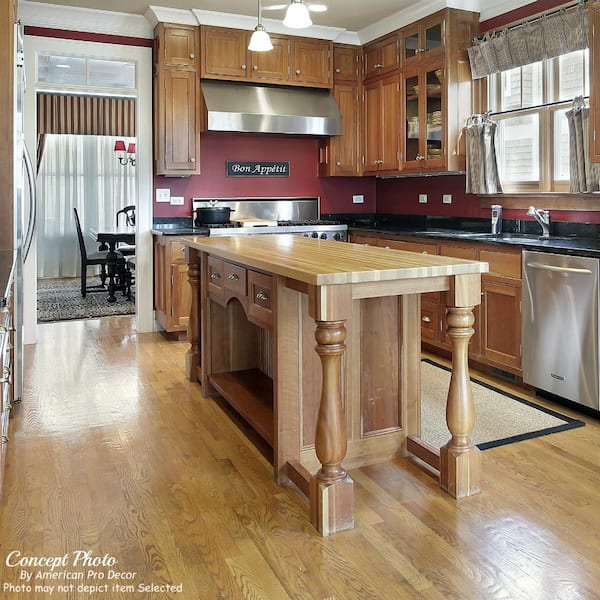Vital Elements to Consider When Picking Legs For Kitchen Area Island
Selecting the suitable legs for a cooking area island includes a mindful assessment of several variables that can significantly influence both capability and aesthetic appeal. As we check out these components, it becomes clear that each choice can have far-ranging implications for the total cooking area experience.
Product Options
When selecting legs for a kitchen area island, recognizing the various material choices is crucial for achieving both aesthetic charm and architectural honesty (Legs For Kitchen Island). The selection of material considerably influences not just the longevity of the island but also its overall style and performance
Timber is a preferred selection, supplying warmth and versatility. Solid hardwoods, such as oak or maple, offer stamina and can be discolored or repainted to match the kitchen area decoration. Steel legs, usually made from stainless-steel or functioned iron, add a commercial and modern-day feeling while making sure longevity and security. These products are immune to use and can support substantial weight, making them perfect for larger islands.
Another option is crafted materials, like MDF or plywood, which can be much more cost-effective while still offering an array of surfaces. However, they might not supply the exact same level of security as solid timber or steel. Materials such as acrylic or glass can develop a contemporary appearance, though they may call for extra support to make sure stability.
Inevitably, the choice of product for kitchen area island legs should line up with the desired capability and the overall motif of the kitchen area.
Design And Style

When taking into consideration design, the form and coating of the legs are important. Conical legs can supply a feeling of lightness and beauty, while thicker, much more robust legs can convey strength and security. In addition, the coating-- be it painted, discolored, or natural-- should enhance the kitchen cabinetry and kitchen counter materials to create a unified look.
In addition, the layout of the legs can likewise reflect personal preference. Custom-made or ornamental legs, such as those featuring detailed makings or distinct geometric shapes, can work as centerpieces, adding personality and character to the kitchen. Ultimately, the appropriate option will not just improve functionality yet likewise elevate the visual appeal, making the cooking area island a standout function of the home.
Height Factors To Consider
Selecting the appropriate height for cooking area island legs is crucial, as it directly influences both functionality and comfort. The typical height for a kitchen area island commonly ranges from 36 to 42 inches, lining up with common counter top elevations.

It is also essential to make up individuals' preferences and elevations. Customizing the elevation can guarantee a comfy experience for all member of the family, making the kitchen area island an extra satisfying and functional space.
Weight Assistance
Guaranteeing ample weight support for cooking area island legs is important for both safety and security and functionality. The kitchen area island often offers numerous functions, consisting of food preparation, dining, and added see this site storage, requiring a durable support structure. When picking legs, it is crucial to think about the total weight capacity needed based upon the island's planned use and the products that will certainly be positioned on it.
The choice of product for the legs plays a substantial role in their weight-bearing abilities. Strong timber, steel, and heavy-duty composites normally give superior stamina contrasted to lighter products. In addition, the design of the legs-- whether they are straight, tapered, or have a pedestal type-- can influence their capability to disperse weight properly throughout the structure.
Furthermore, the leg placement must be tactically intended to boost security. Legs placed at the edges or with a bigger base can much better support heavier lots. Constantly consult the producer's specifications concerning tons limitations to make sure that the legs can sustain the designated weight without jeopardizing security. In summary, selecting kitchen island legs with adequate weight support is essential for creating a safe and useful cooking area.
Setup and Upkeep
Appropriate installation and upkeep of kitchen area island legs are crucial for ensuring long life and stability. To begin, it is important to follow the maker's guidelines throughout setup. This often entails securing the legs to the space station utilizing appropriate bolts, ensuring that the legs are degree and aligned. Making use of a level tool can assist prevent tottering and enhance the general aesthetic charm of the cooking area island.
When mounted, routine upkeep is essential to preserve the stability and look of the legs - Legs For Kitchen Island. For wooden legs, regular cleansing with a wet cloth and application of appropriate timber gloss can prevent wetness damages and keep their finish. Metal legs may need a mild cleansing solution to eliminate oil and crud, adhered to by a dry cloth to stop corrosion Visit Your URL development
Furthermore, examine the legs consistently for indicators of wear or damages, such as splits or loosened joints. Tightening up screws or screws as needed can likewise extend the life expectancy of the legs. By adhering to these setup and maintenance practices, property owners can guarantee that their kitchen island remains sturdy and aesthetically appealing for several years ahead.
Final Thought

Aesthetic coherence is critical in choosing the design and style of legs for a cooking area island, as these components substantially affect the overall ambiance of the space. Tapered legs can provide a sense of lightness and elegance, while thicker, much more robust legs can convey strength and stability.Choosing the appropriate elevation for cooking area island legs is crucial, as it directly influences both capability and convenience. In recap, choosing kitchen area island legs with appropriate weight support is vital for producing a functional and secure cooking area.
In final thought, selecting legs for a kitchen island demands mindful factor to consider of different factors, consisting of product choices, style, elevation, weight assistance, and setup.